7 sustainable office design trends for 2025
Sustainability has been a hot topic for some time now. The way we design buildings, including our offices is an increasingly big part of the conversation.
The UK has a target to hit net zero by 2050. With 80% of the buildings that will be standing by this time already built, we must think about how to incorporate sustainability into our existing offices.
Here at GoSquared, we’re just as invested in this discussion as we launch our new climate-conscious email marketing tool EcoSend.
So whether you work in a traditional office, or a home office as a remote worker – here are 7 sustainable office design trends we think will be a hit in 2025 to inspire you.
Before we begin: Grab your free trial of EcoSend, and we’ll plant a tree just for signing up. ✉️
Biomimicry Design
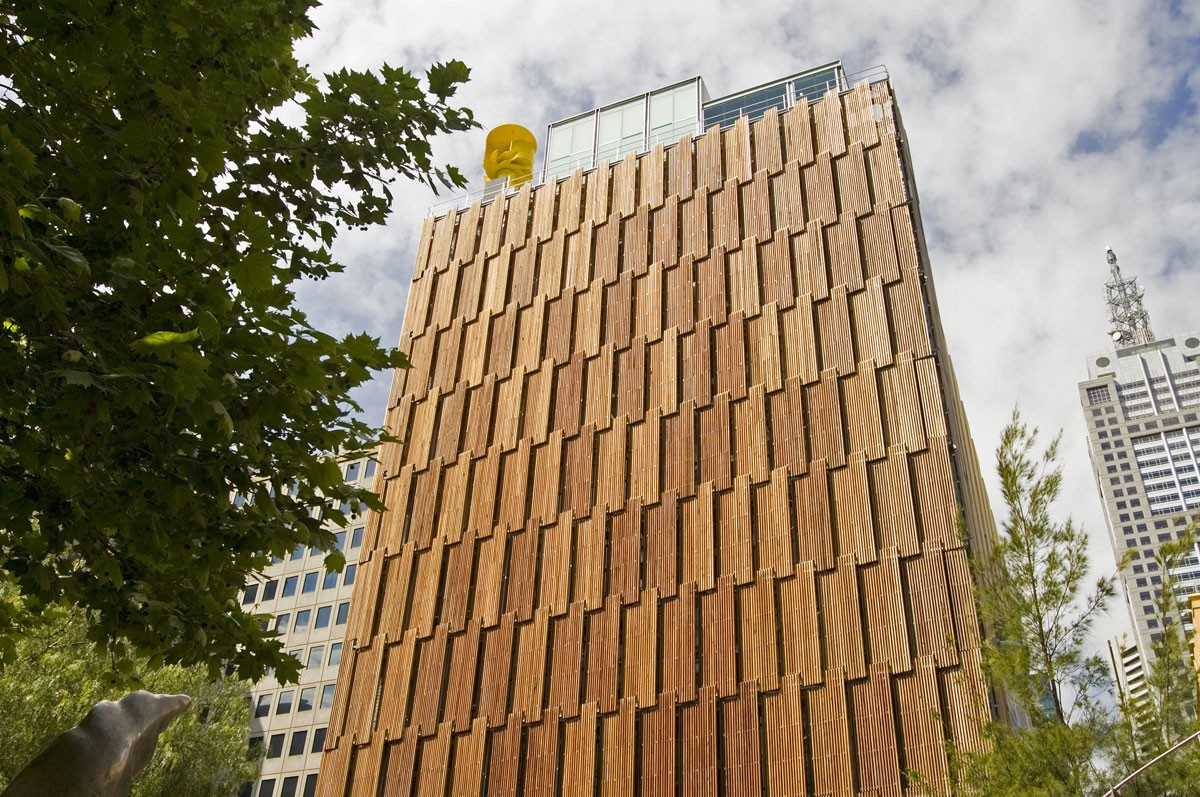
(Image by City of Melbourne)
What is biomimicry design you ask?
Well, the clue is in ‘bio’ and ‘mimic’. That’s because biomimicry design involves design concepts which imitate nature’s own solutions to various problems.
Biomimicry is how we discovered the likes of velcro, wetsuits, wind turbines and even paint. Now the methods termites use build their homes are being incorporated into modern architecture. This includes the creation of office buildings to improve sustainability.
Council House 2 in Melbourne is a recent construction based on a termite mound. It is known as Australia’s most advanced commercial office building, boasting 80% less energy consumption compared with a building of typical construction.
Termites are dubbed the ‘reigning monarchs’ of architecture in nature. Termite mounds are both strong and intricate, with a level of detail outdoing even that of historic castles. Their nests are capable of maintaining the temperature and humidity crucial for the fungus for which they survive on to grow.
Based on how termites build their homes, the Council House 2 building has natural convection, thermal mass, water cooling and ventilation systems. Even the exterior of the building takes inspiration from the skin system.
As architects, engineers and designers continue to work to solve the climate crisis, we expect to see more buildings based on the ingenious work of nature in the form of biomimicry design. This is especially the case for any offices yet to be built.
Long-Term Approach To Design Directions & Material Choices

How easy is it to make design decisions based on what’s on trend right now?
Or even, what happens to be the cheapest option materials wise?
For an office building to be sustainable, it needs to have features which offer the longest possible lifespan. Considerations also need to be made about how the product can be reused, repurposed or recycled once it is no longer needed.
Some examples of greener materials include the use of sustainable timber, bamboo or mushroom leather. For the likes of windows and doors, aluminium can also be infinitely recycled without experiencing a reduction in material quality.
For a tangible example of what a low carbon office design looks like, we can’t get enough of the above image, which is a sustainable office design concept by Liqui Design. The design was created for the offices of Allegra in London.
Low Carbon Green Retrofitting
All existing buildings will at some point develop faults within their green credentials due to degradation, or simply new technology coming to the forefront.
For instance, an inefficient heating or cooling system. Or materials which are no longer energy efficient, meaning they allow precious heat to escape the room.
Green retrofitting is one such solution when it’s not possible to build new. The practice involves renovating an existing building with the aim of reducing its carbon emissions.
Even the Empire State Building has undergone low carbon green retrofitting, which resulted in a 54% drop in carbon emissions. The works involved adding a new chiller plant to power the air conditioning system. Plus updating windows, adding smart metres for tenants and similar green initiatives.
Like most older buildings, the air conditioning unit was previously the biggest drain on resources within the Empire State Building, with yearly energy bill costs of $8,512,325. Therefore, green retrofitting worked not only reduced carbon emissions but also this extremely hefty electricity bill too.
Regardless of whether your office is a small startup or an iconic world building – green retrofitting works can still be applied to improve wasteful resources or design features, even on a budget!
Repair Vs Replace
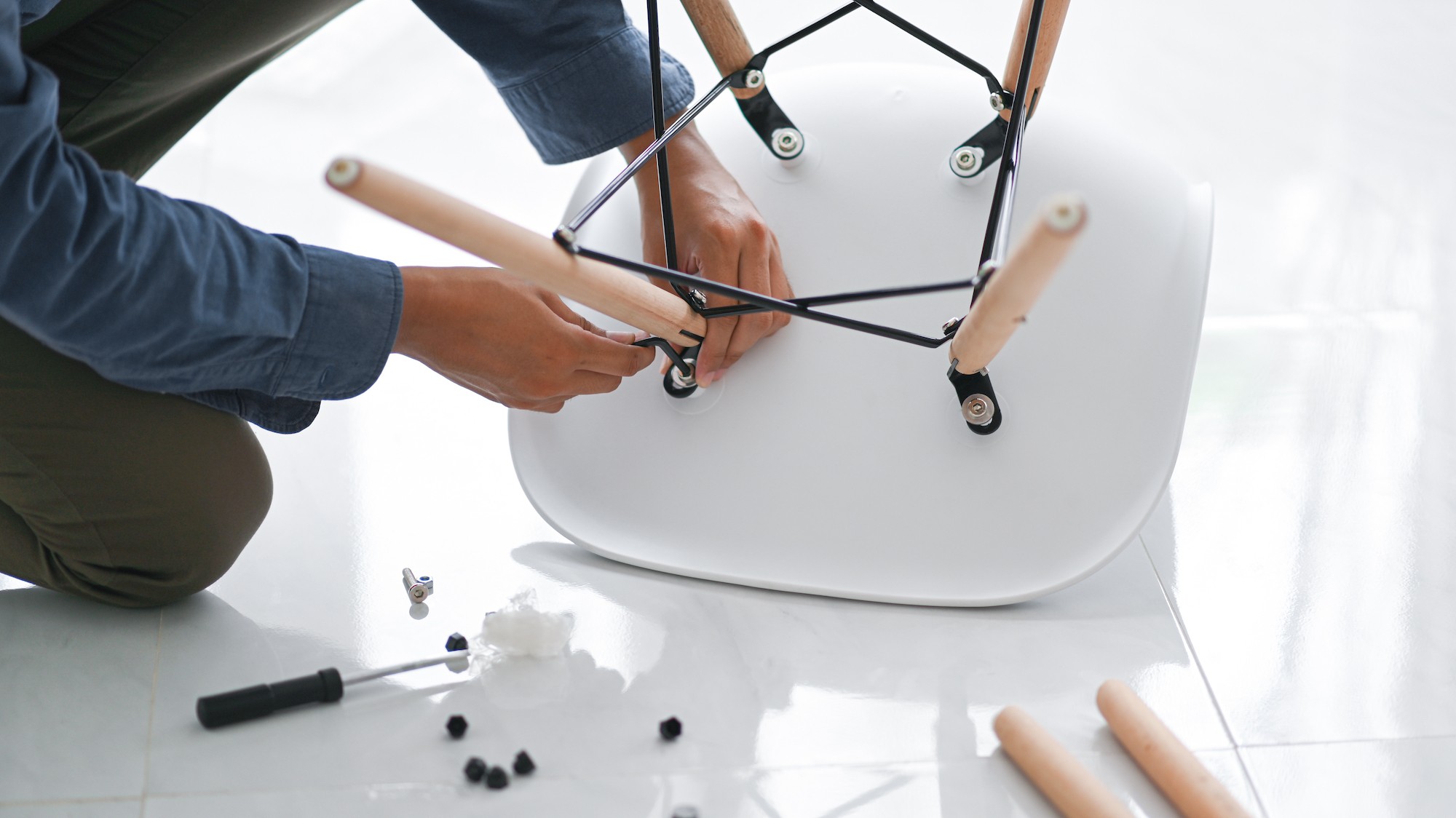
So your desk has a scratch on it, or your office chair is getting a bit squeaky. Does the solution really involve buying new, or could repairs be made to solve the issue?
TV shows such as Repair Shop have inspired us to give life to the old, rather than opting straight for new items. There’s a big need for this upcycling ethos to appear in our office designs too, especially when simple repairs are possible.
Beyond office furniture, it may be possible to repair broken or damaged flooring, walls, light fixtures, staircases, doors, windows and similar building aspects. So certainly consider all options, especially if the item is otherwise in fantastic condition.
Use Of Biophilia For Greener Air Purification
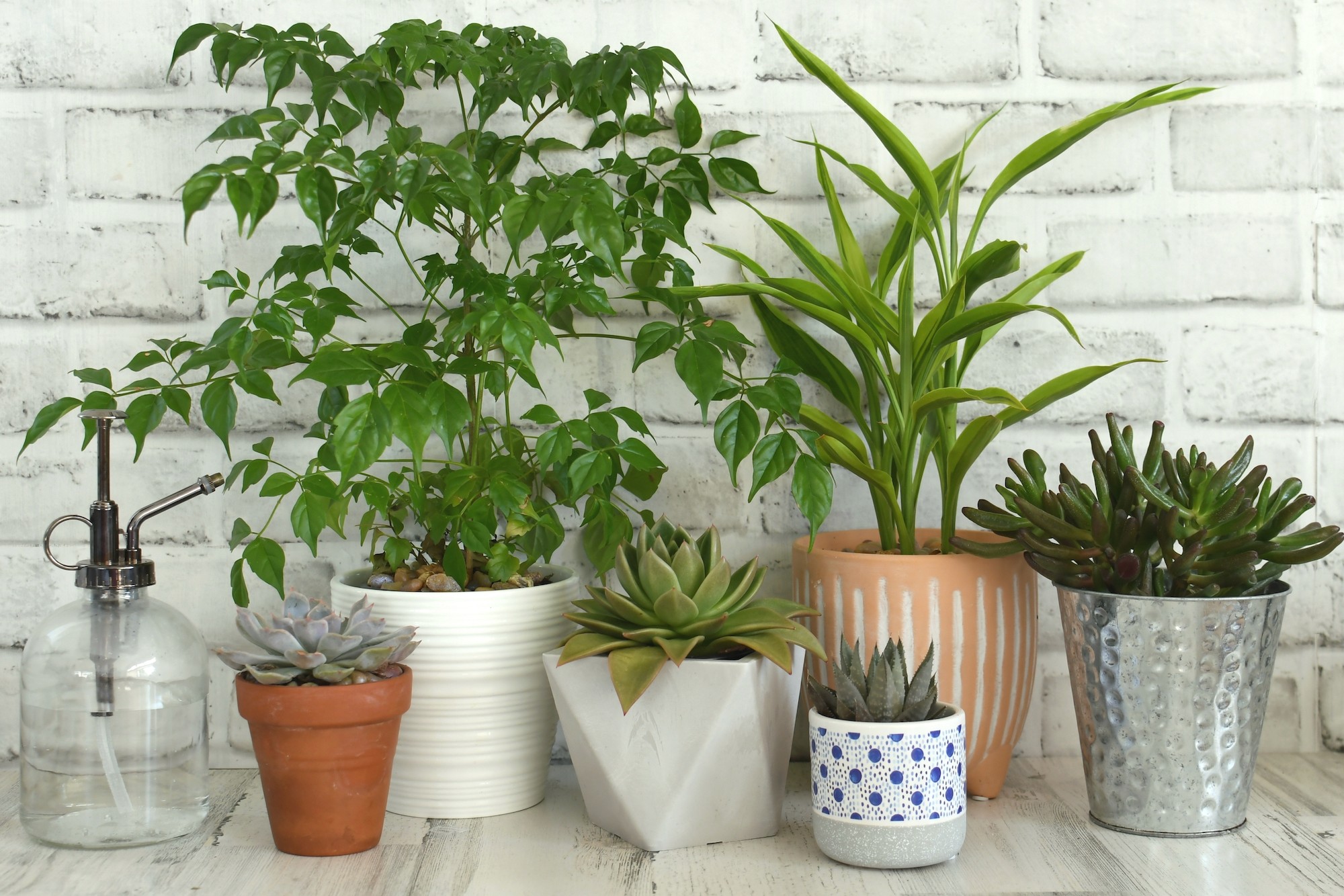
We’ve long known that indoor plants have a plethora of well-being and productivity benefits when used in an office space.
However, we’re also in awe of the potential for plants to remove carbon from the air we breathe too.
Research by NASA found that indoor plants can remove up to 87% of air toxins within 24 hours. The study recommended adding 2-3 plants for every 100 square feet of a room.
Unfortunately, as most traditional air purifiers have filters which cannot be recycled, they aren’t always the greenest things to have in the office. Therefore, plants make for a fantastic (not to mention cheaper!) natural air purification alternative.
Some of the best plants for air purification are said to include:
- Spider plants
- Dracaenas
- Golden pothos
- Areca palms
- Chrysanthemums
- Bamboo palms
- English ivy
- Chinese evergreen
- Peace lilies
There are also so many ways to incorporate plants within office design. This includes plant walls which can create some striking visuals.
Rooftop Gardens
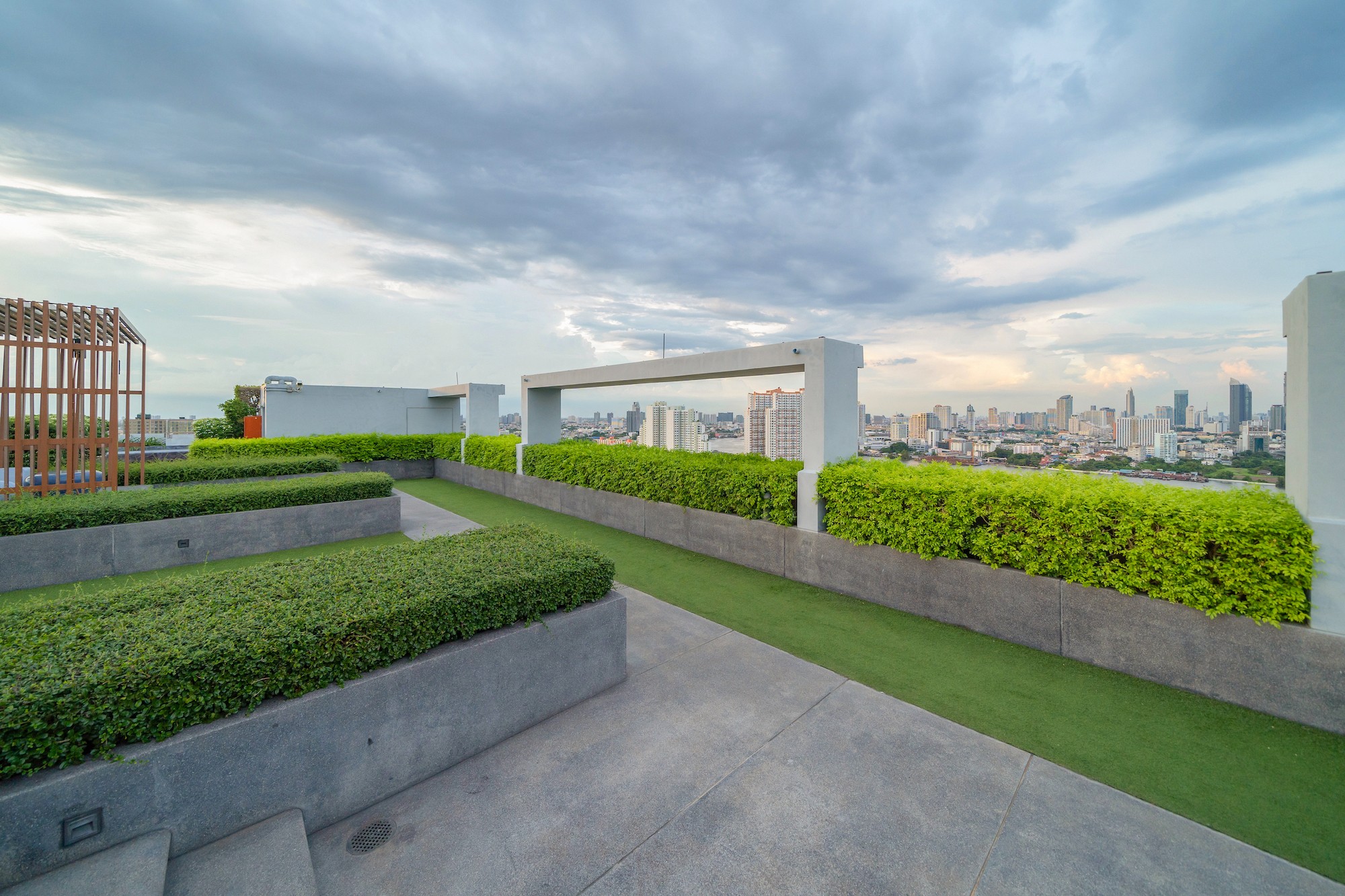
Does your office building have an accessible rooftop space?
Rooftop gardens are fantastic for the local ecosystem. That is, when filled with plenty of natural plants, grasses and shrubs that the likes of birds, bees and insects love.
An added bonus of a rooftop garden is that they create an amazing space to socialise. Easy access to the outdoors and greenery can also boost well-being.
Don’t have the space for a rooftop garden? Add solar panels up there instead.
A report found that if just 5% of rooftop space was used to house solar panels, it could save £12.6 billion annually in energy costs.
Either way, don’t let your rooftop space go to waste, especially if sustainability is important to your business.
Achieve An Office Walk Score Of At Least 70
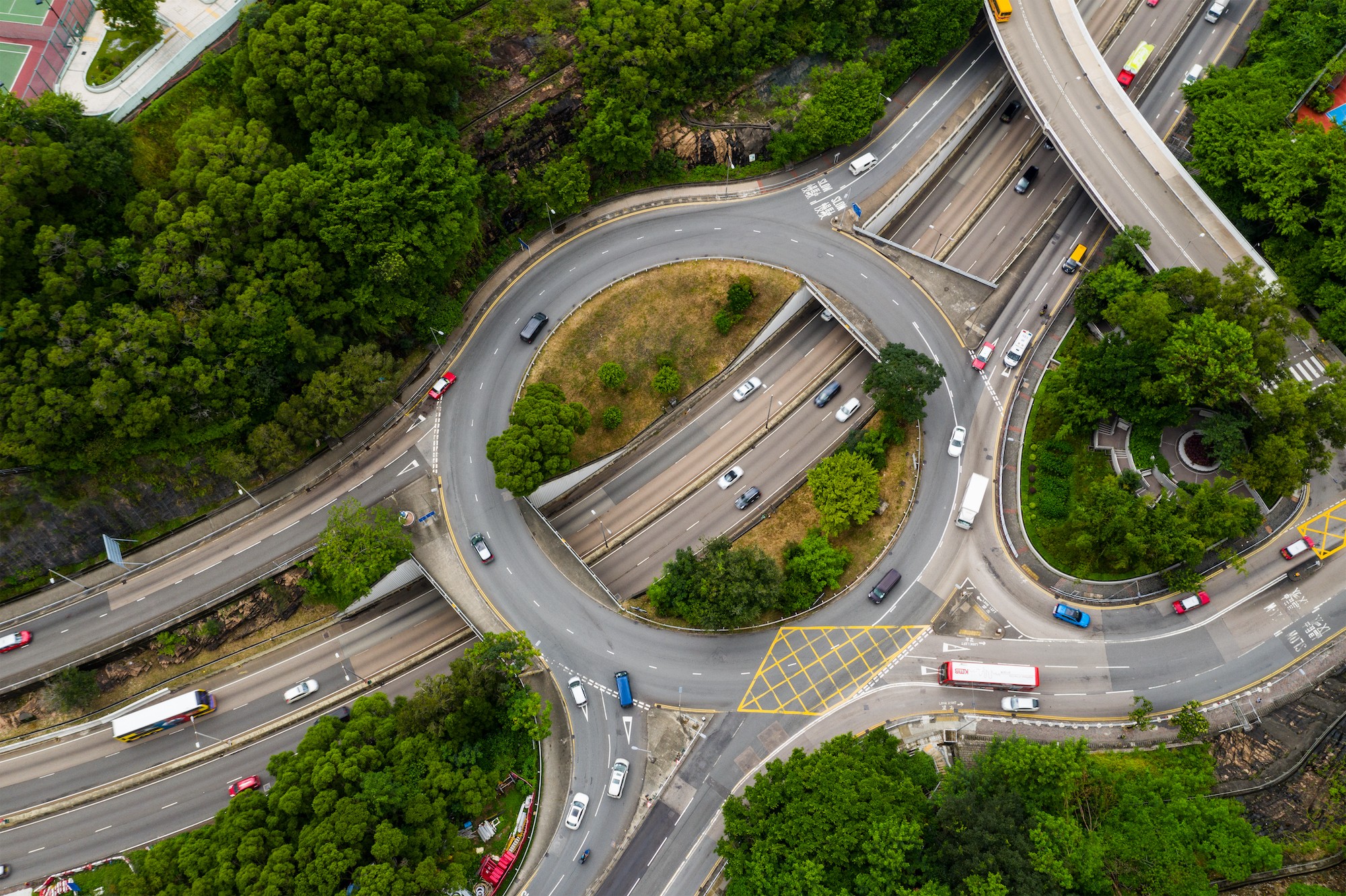
Our seventh and final sustainable office design tip will ensure our other tips don’t go to waste.
That is, to have an office location which is commutable beyond cars, meaning people can get to work easily by public transport. Or better still, by walking!
How this concept can be measured for better or worse is known as a walk score. Based on a scale of 0 to 100, the higher the walk score, the less car dependent the location is considered to be. A good walk score is a score of at least 70.
Surveys may need to be done to determine your walk score if you’re not sure. If you’re looking to purchase or rent an office space, you can also enquire about the walk score.
Consider that remote locations or those not well served by public transport will create more carbon emissions. This is in terms of longer employee commutes, customer journeys and also deliveries to your office.
Want Your Business To Be Even More Sustainable? Try EcoSend For Free Today ✉️
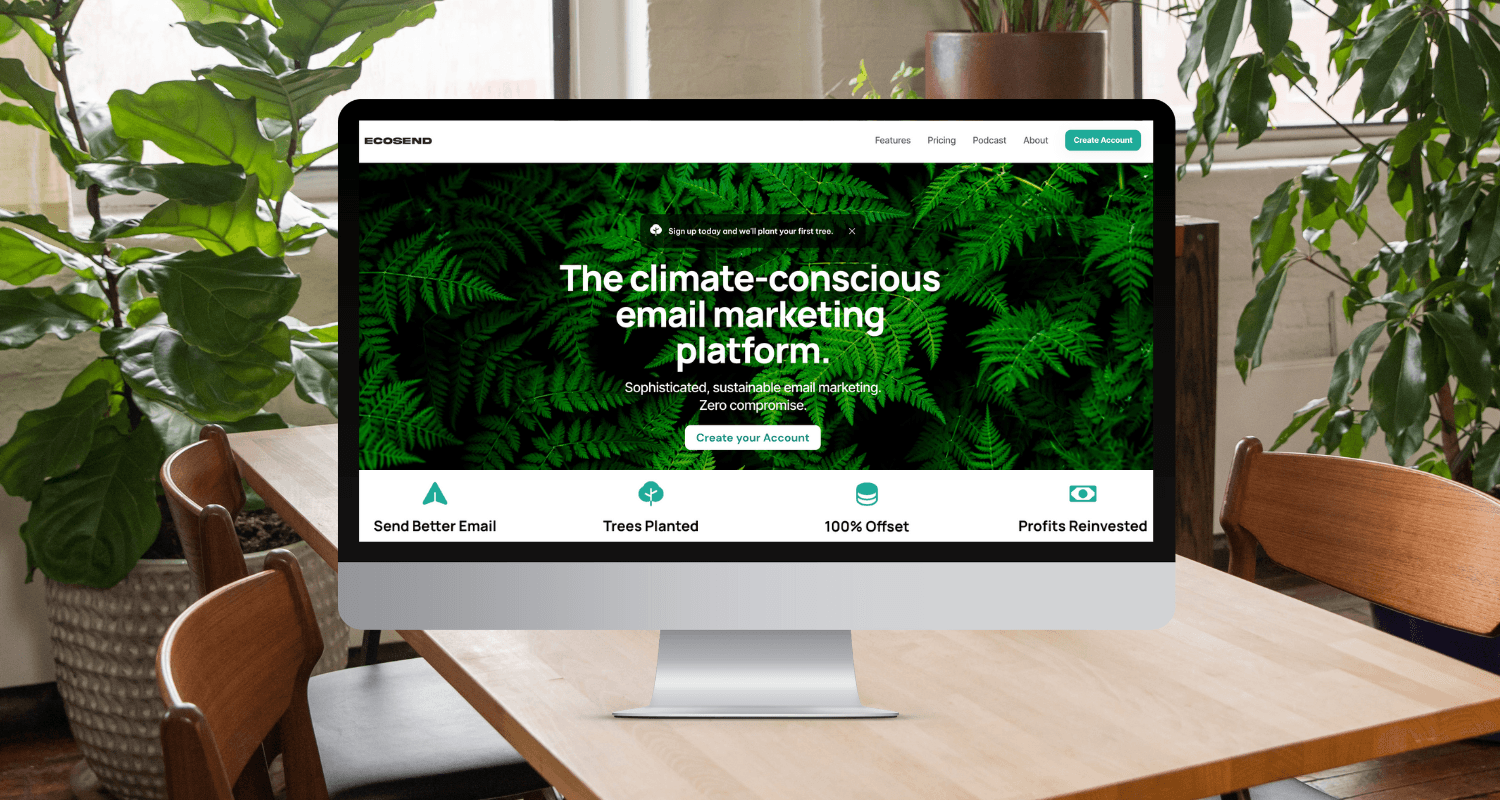
We hope the above sustainability design tips have inspired your next office look.
If you don’t want to wait to make your business greener, we have the perfect solution for you: EcoSend.
Every business uses email. But did you know that email has a carbon footprint? EcoSend is our new climate-conscious email marketing tool to help reduce this problem, and we’d like to welcome your business on board.
Our paid plans start at just $49 per month, making us a fantastic Mailchimp alternative.
There might not be such a thing as a free lunch, but there’s definitely a free trial of EcoSend we can offer you today.
Create your account with us, and we’ll even plant a tree on your behalf just for doing so.
Or if you’d like to have a chat with us first, we can also arrange that including giving you a personalised demo of EcoSend.